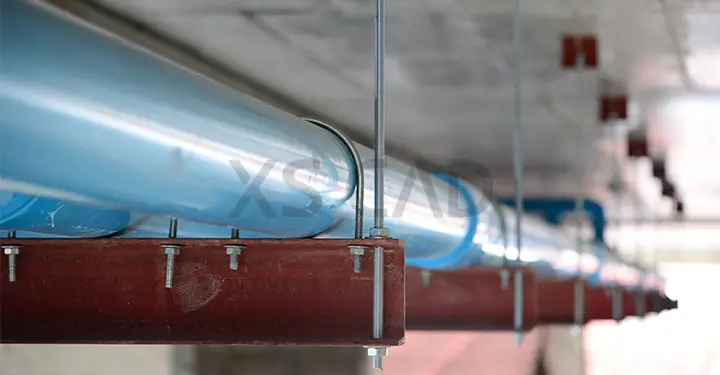Our Articles

Plumbing Design Challenges in the UK
In the United Kingdom, as in many parts of the world, plumbing or public health design has seen changes, advances and new requirements. Creating plumbing and piping plans can be difficult, as a building’s plumbing system typically consists of a complex network of water supply pipes, drainpipes, vent pipes, etc. Effective public health design can be complicated, and if not developed correctly, it can be one of the most expensive systems to repair. Understanding plumbing system design, both commercial plumbing design and residential plumbing design layouts, is one of the challenges of effective public health design.
Any system that enables the movement of fluids, involving pipes, valves, plumbing fixtures, tanks and other such equipment is called plumbing, or public health services. These systems have a variety of functions, such as:
One of the challenges for M&E engineers is to have access to precise design information to facilitate the effective planning of M&E systems layout. This is important in case of complex systems, especially in congested areas, which can be challenging to plan during the design stage.
As Building Information Modelling (BIM) is increasingly used in construction, M&E engineers can have access to critical design information while being part of an efficient building workflow, ultimately resulting in fewer on-site errors and optimum systems design.
Due to the different types of topography in the UK, the source of water depends on the area where it is required. Types of water sources are:
These sources provide water of differing bacterial and physical qualities, such as:
To a great degree, these qualities are dependent on the environment, and with the effects of climate change and other looming environmental factors in play, households are hoping that technology will lead the way to greater efficiency in building services.
Typically defined as the careful management and preservation of natural resources and the environment, environmental conservation takes into account climate change, ozone layer destruction and environmental pollution. These factors now have a considerable impact on building design. Regulations have been put in place to help space heating and hot and cold water services design. There is official support for all initiatives to reduce energy use and increasingly rely on renewable energy sources. Plumbing professionals in the UK are more than up for the challenge of deploying new technological advances to fulfil these requirements.
Advances in technology have helped public health design in a number of ways, from smart pipes to water heaters without tanks. Plumbing professionals can now connect drain rods and pipe cutters to Wifi-enabled tablets and waterproof cameras. Some of the innovations that plumbing professionals are incorporating into public health services design are:
Smart Pipe Systems
Hands-Free Faucets & Fixtures
Tankless Water Heater Systems
Tankless water heater systems are so efficient that they can supposedly save more than 25% on annual water bills.
Smart Shower Heads
Recycling Dishwasher Water
Greywater Recycling
Smart Irrigation Systems
The systems mentioned above can be cloud-based and can be connected through 3G and 4G wireless networks for precision and reliability. Challenges for plumbing professionals lie in delivering accurate, error-free and efficient design drawings and models to ensure a smooth installation process.
Challenges to Standard Bathroom Plumbing Layouts
Plumbing, or public health, design would be somewhat incomplete without discussing bathrooms, the scenes for most design challenges. When redesigning, repairing or renovating existing bathrooms, one of the most challenging situations in the UK involve small spaces. In addition there are a few other common challenges, such as:
Challenge:
Small bathrooms give professionals little room to work and to fit in the fittings required.
Solutions:
Challenge:
Problems due to waste pipe fall are messing up the new layout design.
Solutions:
Challenge:
Bathroom remodelling is affected by plumbing in awkward spaces, such as adding a basement bathroom or a bathroom that is far from the main drain.
Solution:
Typically, bathrooms are connected to a 100mm soil pipe. When this is difficult to do, bathrooms can be installed in awkward spaces with a flexible small-bore waste pipe and a pump with a macerator.
Challenge:
A power shower’s water is not draining properly, resulting in standing water in the shower tray.
Solutions:
Challenge:
A shower has low water pressure, resulting in a weak, disappointing shower.
Solutions:
Challenge:
It takes too long for hot water to reach the faucet, as the bathroom is at the end of a long plumbing run.
Solution:
Connect a hot water cylinder to the end of the run and instal a bronze pump on the loop, with a timer, so hot water keeps circulating and faucets will provide instant hot water.
Most of the challenges mentioned above for bathrooms can be solved by adding value to standard bathroom plumbing layouts through the support of high-quality, accurate plumbing design services and plumbing design drawings services. When these services become difficult to source in the UK, many firms are looking for offshore plumbing system design support, both for residential plumbing design layouts and commercial plumbing design.
XS CAD has valuable experience providing design for plumbing system design and plumbing design drawings services for general contractors and design consultants. Our range of services for building design firms across the world and specifically in the UK include standard bathroom plumbing layouts, residential plumbing design layouts, commercial plumbing design and other plumbing design services. We create these models and drawings by using Revit, AutoCAD and BIM Collaborate Pro for cloud collaboration.

